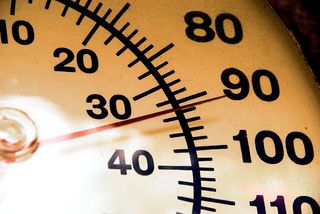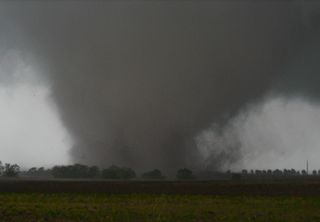Gas Prices on Rise as Spring Temperatures Increase

This article was provided by AccuWeather.com.
The approach of summer may mean warmer temperatures, brighter weather and more time outdoors, but it also means that drivers will see the price of gas increase. While part of this can be attributed to basic supply and demand as more people hit the road for vacations, for some locations there's actually a difference in the gas you fill up with during the warmer seasons.
Gasoline has what is known as a Reid Vapor Pressure, its vapor pressure as measured at 100 degrees Fahrenheit. The higher the vapor pressure level, the more easily it evaporates. The more gasoline vapor that evaporates into the atmosphere, the more pollution it creates, especially by contributing to ozone production.
Higher temperatures will cause fuel to evaporate more quickly, build up pressure in gas tanks and may even cause gasoline to boil. To combat the issue of summer heat increases, gas stations switch over to a different gasoline formula that has a lower RVP, sitting lower than the 14.7 psi average. This results in gasoline that burns cleaner than what we fill our tanks with in the winter. However, this mixture costs more to produce, and also requires a temporary shut down of refineries to make the transition. The result is a temporarily shorter supply of gasoline, which again contributes to supply and demand price increases.
The Environmental Protection Agency, the group behind the seasonal gas transitions, released a report on the regulations and their results in 2001.
"Clean fuel programs have been an integral part of the nation's strategy to reduce air pollution," it states. "These programs provide significant, cost-effective, and timely reductions of VOC and NOx emissions. Seventy-five million people breathe cleaner air as a result of the federal reformulated program, and millions more benefit from different state or local fuel programs in fifteen states."
The main difference in ingredients in seasonal gas is the level of butane. It's an inexpensive additive, but it also has the highest vapor pressure level. It's able to be used in larger quantities in colder climates, but when the temperatures heat up the butane levels must go down to keep gasoline's overall RVP low enough to combat the change.
Sign up for the Live Science daily newsletter now
Get the world’s most fascinating discoveries delivered straight to your inbox.
For more varied climate areas that participate in this program summer gas comes in May and transitions back to winter in September. The result is lower gas prices for a little over half the year. For areas that have higher temperatures year-round, however, gas prices are consistently higher than in other parts of the country.
© AccuWeather.com. All rights reserved. More from AccuWeather.com.
The only sure thing about weather forecasts is that they’re wildly different all over the planet. Test your knowledge on the wild ranges in temperature, precipitation and more.
Extreme Weather Facts: Quiz Yourself

